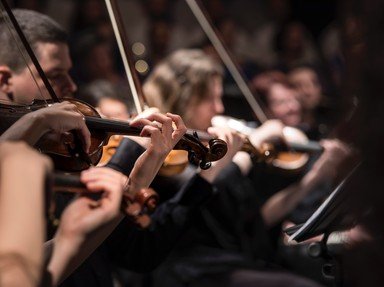Quiz Answer Key and Fun Facts
1. Whose piano sonata nr. 14 in cis minor, completed in 1801, was originally named "Quasi una fantasia" but has been renamed the "Moonlight Sonata"?
2. "Air" is the second movement in Suite number 3 (BWV 1068). Who was the composer?
3. Where did the musical theatre "1,000 Airplanes on the Roof" by Philip Glass have its first night? Don't overlook the obvious.
4. Many classical compositions are named after birds. Which bird inspired Igor Stravinsky, Albert Roussel, Dennis Ballière and Jean-Benjamin de La Borde?
5. Who composed the opera "Tosca" with the distinctive aria "E lucevan le stelle" ("And the stars were shining")?
6. "L'ape musicale" (1789) is a pastiche in which you can find music created by no less than twelve classical composers. How would you translate this Italian title in English?
7. Gustav Holst composed in 1914-1916 an orchestral suite named after one or more celestial bodies. What is the title of this suite?
8. "Zolotoj Petushok" is the original title of the opera "The Golden Cockerel". Which Russian composer completed this opera named after an unlikely bird?
9. Gabriel Balart completed the zarzuela "Asi en la tierra como en los cielos". What is the literary source for this title?
10. The Swedish composer Sven-Erik Bäck named a ballet after a youngster who flew too close to the sun. What's the title of this ballet? Various spellings are allowed.
Source: Author
JanIQ
This quiz was reviewed by FunTrivia editor
agony before going online.
Any errors found in FunTrivia content are routinely corrected through our feedback system.
